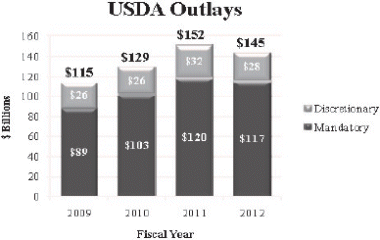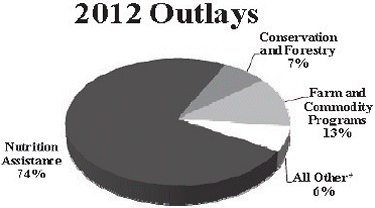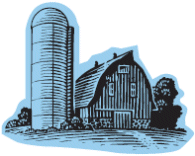

To send a message to an author, click on the author's name at the end of the article.
This Month in Ag Connection | Ag Connection - Other Issues Online
As herbicides and combinations of herbicides become more numerous, there are greater chances of errors and off-target chemical drift in herbicide applications. Herbicide tolerant crops have been developed that allow certain non-selective or broad spectrum herbicides to kill weeds without injury to the crop. The use of non-selective herbicides on tolerant crops presents special challenges to insure crops without the trait are protected from accidental misapplications and off-target movement.

The University of Arkansas (UofA) Cooperative Service is promoting "Flag the Technology" program. This program consists of placing color-coded bicycle flags or similar markers at field entrances or other conspicuous locations to indicate the use of different herbicide technologies. The system, which is gaining popularity in the Midwest, can make a difference between a healthy crop and a damaged or dead one. Missouri agricultural retailers who make custom applications to a large number of fields are beginning to use the system, according to Kevin Bradley, University of Missouri Extension weed management specialist.
When an applicator pulls into a field to make an herbicide application, the flags help assure the correct chemicals in their tank matches the crop traits in the field. Also, they might be able to look at nearby fields for different colored flags before spraying in windy conditions. Preferred flag size is a minimum 11in X 17in for maximum visibility on an 8ft X ¬ in fiberglass pole.
A brochure about the Flag the Technology program is available at www.aragriculture.org/pesticides . A two-minute video overview from the UofA Division of Agriculture is available at: youtu.be/ChNGbU5TyOY .
Source: Wayne Crook, Agronomy Specialist and Kent Shannon, Ag Natural Resource Engineer
This Month in Ag Connection | Ag Connection - Other Issues Online
The Farm Bill is again in the news this year, since a bill was not passed last year. The current bill we are operating under is the Food, Conservation and Energy Act of 2008 (2008 Farm Bill). The five year law expired on September 30, 2012. Congress was unable and/or unwilling to pass another Farm Bill before the expiration date. On January 2, 2013, President Obama signed into law the American Taxpayer Relief Act of 2012, which extended authority of the 2008 Farm Bill. It was a simple one year extension that is set to expire September 30, 2013.
The history of similar farm legislation began in 1933, a few days after President Franklin D. Roosevelt was inaugurated. Roosevelt called Congress into special session and introduced fifteen pieces of legislation, which included the Agricultural Adjustment Act (AAA). The idea was to balance supply and demand to allow decent purchasing power for farmers. In 1937, the Supreme Court ruled AAA unconstitutional. Soon thereafter the basic program was rewritten and passed into law. Since then various "Farm Bills" have been passed to extend agricultural related legislation.

The contents of the Farm Bill have changed some through the years mainly to gain and maintain urban legislator support. Trying to determine the exact amount of the Farm Bill is challenging. It is quite easy to find the U.S. Department of Agriculture (USDA) budget. The tough part is trying to extract out farm bill spending (mandatory by law), since there is additional mandatory spending (required through other laws) and discretionary (funds not designated by law) spending. The following content is from the 2012 USDA budget based on $145 billion. The following bar chart shows that 81% of the outlays are associated with mandatory spending (or $117 b) and 19% discretionary spending.
Most of the Farm Bill spending is for supplemental nutrition assistance spending (SNAP) (formerly called food stamps), commodity programs, crop insurance, conservation programs and energy. The Food and Nutrition Service (FNS) coordinates the food related programs. SNAP has over 45 million participants (2012) and funds of $75 b line itemed and an additional $11.9 b in Recovery Act funds, which likely are not part of the Farm Bill. The mandatory conservation programs administered through Natural Resources Conservation Service (NRCS) include: Environmental Quality Incentives Program (EQIP), Wetlands Reserve, Conservation Security Program, Conservation Stewardship Program, Farm and Ranch Lands Protection and others. Rural Development coordinates the mandatory funding for the energy pieces of the Farm Bill totaling about $178 m in 2012. The Farm Service Agency (FSA) supports delivery of farm credit, disaster assistance and commodity programs and some of the conservation programs. FSA also provides administrative support for the Commodity Credit Corporation (CCC) which funds most of the commodity, export and some conservation programs. Risk Management Agency (RMA) has mandatory funds to coordinate the crop insurance program.

The largest mandatory outlay, not part of the Farm Bill is the school lunch program, which is about $80 million/day (includes subsidies for every lunch and breakfast served, whether free or fully paid).
Discretionary programs include: Special Supplemental Nutrition Programs for Women, Infants and Children (WIC), Public Law 480 (mostly food sales/grants to developing countries), rural development loans and grants, research and education, soil & water conservation technical assistance, animal and plant health, management of national forests and a few other items.
Where is Extension in the tangled web called USDA budget? Extension is called National Institute of Food and Agriculture (NIFA) at the federal level. The mandatory funding (Farm Bill) totals $129 m, which is line itemed to six projects, the largest being Specialty Crop Research. The entire NIFA budget (mandatory plus discretionary) funding was $1.3 b, or 0.90% of the USDA budget.
In summary, there are many programs funded through the Farm Bill related to food, agricultural production, conservation and energy. It takes time to learn about the programs and how the funding works. The goal of the farm bill is to provide an abundant safe food supply and to make sure all people have access to adequate healthy foods. We will continue to hear much discussion as the next farm bill develops. Just remember whatever becomes law will affect our local areas.
(Sources: USDA FY 2012 Budget Summary and MU Food and Agricultural Policy Research Institute [FAPRI])
Submitted by: Mary Sobba, Ag. Business Mgmt. Specialist
This Month in Ag Connection | Ag Connection - Other Issues Online
Before too long, beef producers will begin harvesting the 2013 hay crop. It's still unknown how the yields will turn out, but producers can plan ahead now for hay storage options.
A lot of ink has been spilled by people writing about the importance of proper hay storage methods, yet there still seems to be room for improvement in this area for many beef producers. Let's attack the problem again in a slightly different manner.

According to the National Agriculture Statistics Service, average hay yields for the state of Missouri for 2009 and 2010 (the latest data available) were approximately 2.0 tons per acre. One 1,300 pound cow will consume about 2.2 tons of hay in 120 days. Current market price for hay is approximately $110 per ton, so a cow needs to eat approximately $240 worth of hay during a 120 day winter feeding period. The amount of additional hay needed will depend on losses due to harvest, storage and feeding.
Focusing on just the storage losses, research from the University of Tennessee measured hay storage losses of 37% for uncovered hay stored on the ground, 19% for net wrapped hay stored on the ground, and 6% for hay stored in a barn. It is impossible to eliminate all storage losses, but they certainly can be minimized.

Based on this data, if hay is stored uncovered on the ground, a producer will need to harvest 1.75 acres of hay at a value of $385 in order to have enough hay for the cow to eat during the winter. If the hay is net wrapped and stored outside on the ground, a producer will need to harvest 1.36 acres of hay at a value of $299 in order to have enough hay for the cow for the winter. If hay is stored in a barn, 1.17 acres must be harvested at a value of $257 to feed the cow during the winter. These figures do not include harvest or feeding losses, which can be substantial in some cases, and would add additional cost to the winter feed bill.
It requires harvesting 16 to 50 percent more acres than necessary if you store hay outside, uncovered, and on the ground. Using current market prices, if a producer wants to spend an extra $130 per cow for hay, store the hay outside, uncovered, and on the ground.
If hay must be stored outside, eliminating ground contact and covering the bales will dramatically reduce hay storage losses, reduce land needed for hay harvest, and reduce feed cost.
Author: Gene Schmitz, Livestock Specialist
This Month in Ag Connection | Ag Connection - Other Issues Online
Special use valuation (SUV) allows an estate to value real property used in a business on the basis of the property's value in its current use, such as farming, rather than its fair market value. This provision can be used to reduce the gross estate up to a maximum of $1,070,000. To qualify for special use valuation, in addition to the decedent being a U.S. citizen or resident, the following conditions must be met.
Second, at least 25% of the adjusted gross estate must be qualified business real property.
Third, the real property qualifying for the special use valuation must pass to a qualified heir or heirs.
Fourth, the real property must have been used in the business for five of the last eight years prior to the decedent's death.
Fifth, the decedent or a member of the decedent's family must have materially participated in the business for 5 of the last 8 years before the decedent's retirement, disability, or death.
For an individual with substantial non-business assets or situations where major restructuring of assets are being considered, timely planning with the individual's estate planning team can help insure the estate will qualify for the special use valuation. The members of the team might suggest annual gifting or the sale of non-qualifying assets, and/or perhaps the purchase of additional qualifying assets. Early planning and continued monitoring of one's estate can pay substantial dividends with regard to the special-use valuation provision.
For special use valuation, a qualified heir is considered to be a member of the decedent's family, including spouse, parents, brothers, sisters, stepchildren, and spouses or lineal descendants of these individuals. Retiring farmers and surviving spouses interested in qualifying their real estate for special use valuation should review the requirements for "material participation" and "active management" with their tax planners. Another important note is that the step-up in basis of the property for which special-use valuation is elected is limited to the special-use value, rather than the fair market value date of death.

Special use valuation can offer substantial estate tax savings and provide added liquidity during this period of transition of a family business from one generation to the next. However, if the benefits of this provision are to be maximized, creative and timely planning will frequently be required to meet and maintain compliance with the requirements of the provision.
The substantial increase in land values over the past few years can make this a very valuable tool for taxable estates. The formula for calculating special use valuation is demonstrated as follows for a 2012 estate.
Example: Comparable farm land has a five year average cash rental rate of $200 per acre. The average property tax per acre is $10. The 2012 published interest rate for AgriBank, FCB was 5.61%. It is estimated the fair market value of the land is $9,000 per acre.
SUV = (Average Cash Rent - Property Tax) divided by AgriBank Interest Rate
SUV = ($200 - 10)/.0561 = $3,387 per acre
Source: Parman R. Green, Ag. Business Mgmt. Specialist
This Month in Ag Connection | Ag Connection - Other Issues Online
Publishing Information
Ag Connection is published monthly for Northeast and Central areas of Missouri producers and is supported by the University of Missouri Extension, the Missouri Agricultural Experiment Station, and the MU College of Agriculture, Food and Natural Resources. Managing Editor: Mary Sobba.